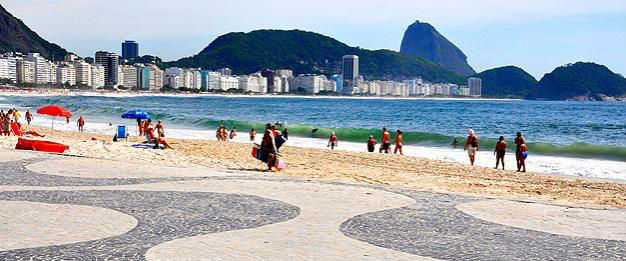Welcome to Rio
Countdown for the Games
At the peak of it’s over four hundred years of history, Rio de Janeiro will host the 2016 Olympic and Paralympic Games. The city is working every day to get everything ready for the world’s biggest sport celebration.
Rio de Janeiro is in the state of the same name, in Brazil’s southeast region, bordered by the Atlantic Ocean and three other states of the Federation: Espírito Santo, Minas Gerais and São Paulo. It is Brazil’s most visited city and is famous for its breathtaking landscape and happy easy-going people.
The mountains, lagoons and oceans are part of the city’s exuberant natural beauty, as well as colourful features of the so-called Wonderful City. The locals provide good vibes and warm welcome to visitors on streets, bars and the beach – where the sunset offers a beautiful, must see experience.

History
In 1530, the Portuguese Court sent an expedition to colonise the area of Rio de Janeiro, instead of using it as a mere stop for its sea adventures. However, the French had been in the state of Rio de Janeiro and its surrounding areas since the beginning of the century, and were ready to fight for control of the region. In 1560, after a series of conflicts, the Portuguese managed to kick the French out.
Rio de Janeiro developed thanks to its natural port. At the same time when gold was discovered in the state of Minas Gerais, at the end of the 17th century, Brazil’s Governor was made into Viceroy. Salvador was the capital of the colony, but the growing importance of Rio’s port ensured the transfer of power to the city, which would still become one of the country's main intellectual and cultural centres.
In 1808, the Portuguese Royal family moved to Rio de Janeiro, after running away from the threat of invasion by Napoleon Bonaparte’s troops. When the Royal family returned to Portugal and Brazil's independence was proclaimed in 1822, the gold mines had already been exhausted and gave way to another source of richness: coffee.
The country continued to grow throughout most of the 18th century, going from monarchy to republic in 1889, when Rio de Janeiro became the federal capital city.
At the beginning of the 20th century, wide avenues and big buildings were built, following the fin-de-siècle French style. Rio de Janeiro remained the federal capital city until 1960, when Brasilia was founded.
Natural wealth – the coast
It is no coincidence that Rio de Janeiro is referred to as the 'Wonderful City'. Its beautiful beaches attract visitors from the world over. One of the most sought after beaches is Ipanema.
Despite this, the most famous four kilometre stretch of beach in Brazil is Copacabana, one of the city’s most fascinating tourist sites. Copacabana simmers day and night. There, one may go to the beach or just have a walk on the seafront pavement, as well as sitting down to have a look at the landscape, while sipping on some coconut water.
Barra da Tijuca is Rio’s longest beach, measuring 18 kilometres. A favourite of the locals, it has big waves that attract those who like surfing, windsurfing and bodyboarding.

Another must see tourist site is Arpoador. In addition to an amazing view, one of Rio's most beautiful with the Dois Irmãos Mountain in the background, it is a hangout of local surfers.
Culture
In addition to beautiful buildings, Rio de Janeiro inherited several museums and cultural venues during the time it was the federal capital city, such as the Museum of the Republic at Catete Palace. The venue, which was the stage of important occasions in the country's history, was the headquarters of the Brazilian government from 1897 to 1960. Indeed, 18 presidents lived there while in office.
At the Copacabana Fort, the visitor is awarded with a privileged view. The fort was founded in 1914 to reinforce the defences at Guanabara Bay.
The Municipal Theatre is another important tourist attraction. It was founded in 1903 and at the time, the most important painters and sculptors were involved in the project, like Eliseu Visconti, Rodolfo Amoedo and the Bernadelli brothers.


Other historic sites built in the 18th century are the Passeio Público, the Nossa Senhora da Glória Church, the Arches in Lapa, the Candelária Church and the Paço Imperial.
Music is also another part of Rio de Janeiro’s culture that stands out. Known globally as the city of carnival, Rio de Janeiro is always remembered the world over because of the samba. Other Brazilian musical references abroad are bossa nova and more recently, funk from Rio.

